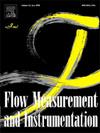自由和淹没水流作用下收缩水槽流量系数的可解释模型
IF 2.7
3区 工程技术
Q2 ENGINEERING, MECHANICAL
引用次数: 0
摘要
流量测量水槽有效地解决了泥沙随水流向下游排放的问题,现有的计算方法难以揭示不同水力参数之间的相互作用。特别是淹没流增加了流量计算的复杂性。本文提出了一种基于物理特性的综合学习模型来预测收缩水槽的流量系数。引入SHAP (Shapley Additive exPlanation)理论来解释模型的预测结果,验证模型输出的可信度。研究表明,XGBoost (eXtreme Gradient Boosting)在自由流和淹没流条件下具有稳定的预测和泛化能力。在自由流动条件下,上游水深与喉道宽度的比值h/W对模型结果影响最大。当h/W值逐渐增大时,对应的SHAP值大于零,对模型预测有正向影响。当h/W值逐渐减小时,对应的SHAP值小于零,对预测结果有明显的负面影响。在沉水工况下,通道宽度与喉道宽度的比值B/W对模型结果影响最大;当B/W的特征值增大时,对应的SHAP值小于零且减小,对模型预测值有损害;当其特征值减小时,对应的SHAP值大于零,对模型预测值有正向影响。总的来说,本研究为理解复杂的排放过程提供了一个新的视角,并展示了从模型中获得科学见解的潜力。本文章由计算机程序翻译,如有差异,请以英文原文为准。
The interpretable model for the discharge coefficient of a contraction flume under free and submerged flows
The flow measurement flume effectively solves the problem of sediments being discharged downstream by the water flow, and the existing computational methods make it challenging to reveal the interactions between different hydraulic parameters. In particular, submerged flow increases the complexity of discharge calculation. This study proposes an integrated learning model based on physical characteristics to predict the discharge coefficient of the shrinkage flume. It introduces the SHAP (Shapley Additive exPlanation) theory to explain the model's prediction results and validate the credibility of the model's outputs. The research shows that the XGBoost (eXtreme Gradient Boosting) has stable prediction and generalization ability under free and submerged flows. In free flow conditions, the ratio of upstream water depth to throat width h/W influences the model results most. When the value of h/W gradually increases, the corresponding SHAP value is greater than zero, positively affecting the model prediction. When the value of h/W gradually decreases, the corresponding SHAP value is less than zero, which has a pronounced negative influence on the prediction results. In submerged flow conditions, the ratio of channel width to throat width B/W influences the model results most; when the eigenvalue of B/W increases, the corresponding SHAP value is less than zero and also decreases, which hurts the model prediction value, and when its eigenvalue decreases, the corresponding SHAP value is more than zero, which has a positive effect on the model prediction value. Overall, this study provides a new perspective on understanding the complex discharge process and demonstrates the potential for obtaining scientific insights from the model.
求助全文
通过发布文献求助,成功后即可免费获取论文全文。
去求助
来源期刊

Flow Measurement and Instrumentation
工程技术-工程:机械
CiteScore
4.30
自引率
13.60%
发文量
123
审稿时长
6 months
期刊介绍:
Flow Measurement and Instrumentation is dedicated to disseminating the latest research results on all aspects of flow measurement, in both closed conduits and open channels. The design of flow measurement systems involves a wide variety of multidisciplinary activities including modelling the flow sensor, the fluid flow and the sensor/fluid interactions through the use of computation techniques; the development of advanced transducer systems and their associated signal processing and the laboratory and field assessment of the overall system under ideal and disturbed conditions.
FMI is the essential forum for critical information exchange, and contributions are particularly encouraged in the following areas of interest:
Modelling: the application of mathematical and computational modelling to the interaction of fluid dynamics with flowmeters, including flowmeter behaviour, improved flowmeter design and installation problems. Application of CAD/CAE techniques to flowmeter modelling are eligible.
Design and development: the detailed design of the flowmeter head and/or signal processing aspects of novel flowmeters. Emphasis is given to papers identifying new sensor configurations, multisensor flow measurement systems, non-intrusive flow metering techniques and the application of microelectronic techniques in smart or intelligent systems.
Calibration techniques: including descriptions of new or existing calibration facilities and techniques, calibration data from different flowmeter types, and calibration intercomparison data from different laboratories.
Installation effect data: dealing with the effects of non-ideal flow conditions on flowmeters. Papers combining a theoretical understanding of flowmeter behaviour with experimental work are particularly welcome.
 求助内容:
求助内容: 应助结果提醒方式:
应助结果提醒方式:


